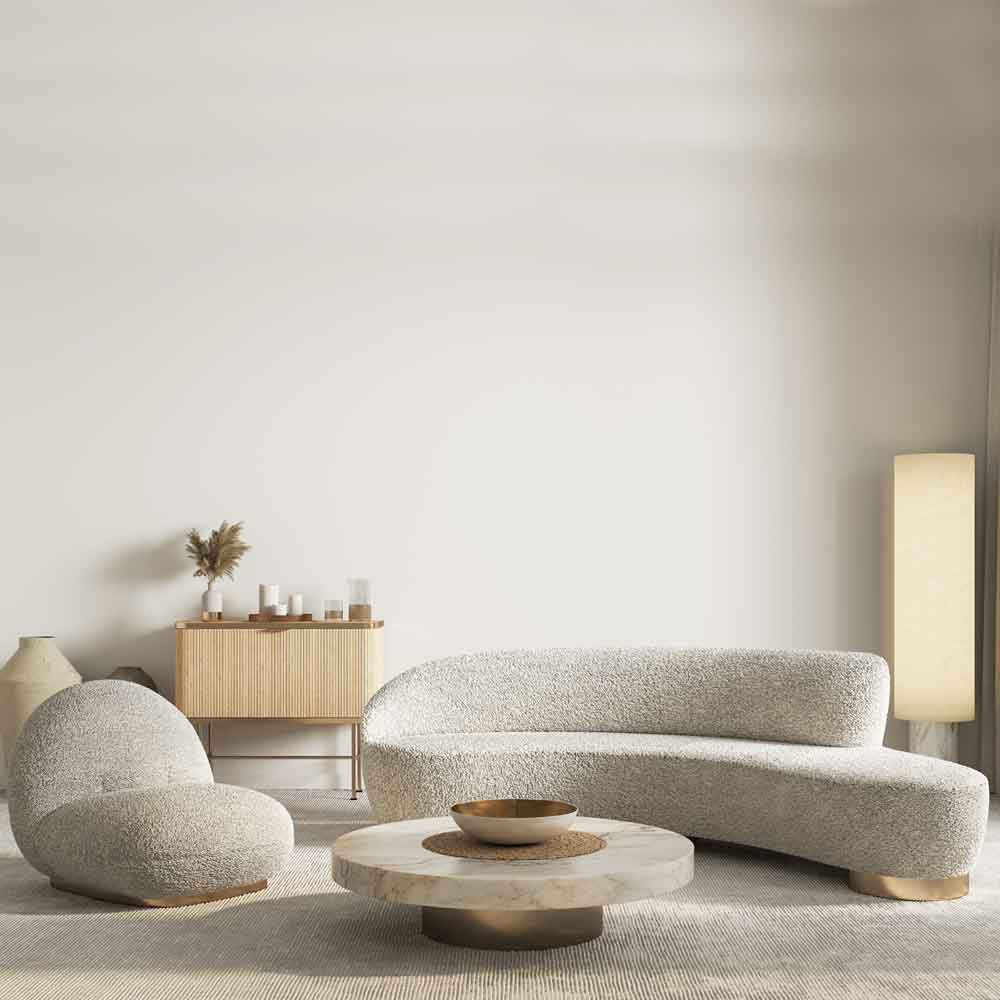Exploring the realm of environmentally sustainable furniture reveals a captivating fusion of design, ethics, and responsibility. In this comprehensive guide, we delve into what is sustainable furniture, offering essential insights to make informed choices. From materials and manufacturing practices to the impact on our planet, we embark on a journey through the diverse landscape of sustainable furnishings.
Discover how reclaimed wood, recycled materials, organic fabrics, and innovative alternatives shape the future of interior design. Explore the significance of certifications, local sourcing, and ethical labor practices in creating a greener, more responsible tomorrow through your furniture selections.
What Is Environmentally Sustainable Furniture?
Environmentally sustainable furniture is crafted with a focus on eco-conscious principles, reflecting a commitment to minimizing its environmental impact. Manufacturers may independently assess their adherence to sustainability guidelines or seek certification from organizations conducting audits to validate their eco-friendly claims. Consumers often show a willingness to invest in certified sustainable furniture as a means of expressing their environmental concerns.

Recycled wood is another favored choice among sustainable furniture manufacturers.
The overarching aim of sustainability is to produce consumer goods that fulfill needs while exerting minimal strain on the environment. When it comes to this type of sustainable furniture, considerations encompass materials and manufacturing processes. Many sustainable furniture makers exclusively employ natural materials, eschewing synthetics due to environmental worries. Renewable natural resources, from fast-growing bamboo to recycled wood, take center stage in their production. Products often bear certification from independent organizations like the Forest Stewardship Council, attesting to their environmental friendliness.
Beyond material choices, sustainable furniture is born in eco-friendly factories designed for minimal environmental impact. These facilities prioritize energy efficiency, waste reduction, and even feature eco-conscious elements like green roofs, fostering biodiversity. Additionally, their strategic locations often diminish the need for extensive shipping. Sustainable furniture's commitment extends to reduced, recyclable packaging and the utilization of alternative fuel-powered transport fleets, contributing to a more environmentally responsible and aesthetically pleasing future.
Types of Sustainable Furniture
Eco-friendly Furniture
Eco-friendly Furniture
Environmentally sustainable furniture encompasses various types, each designed with an eco-conscious focus. Eco friendly furniture is crafted from recycled materials or responsibly sourced wood, adhering to environmentally friendly cultivation and harvesting methods. The production of such sustainable furniture utilizes non-polluting substances, while resource consumption is minimized.
Up-cycled Furniture
Another facet of sustainable furniture is upcycled furniture, creatively repurposed from old or discarded materials. Unlike recycling, this process doesn't break down materials. Remarkably, upcycled pieces often exhibit improved or equivalent quality. This sustainable furniture type not only diverts materials from landfills but also reduces resource consumption.

Rather than discarding furniture or other items that have outlived their original purposes, individuals and artisans turn them into something fresh and functional.
Organic Furniture
Organic furniture derives from locally harvested materials without the use of pesticides. Employing non-toxic dyes and glues, organic furniture manufacturers prioritize local sourcing. Its environmental impact is diminished by reducing transportation needs, utilizing minimal raw materials, and avoiding soil contamination through non-toxic production processes.
Green Furniture
Many sustainable furniture companies offer green furniture, characterized by materials sourced from eco-friendly forests, local manufacturing, minimal toxic components, and remarkable durability. Green furniture can be easily disassembled, recycled, and repaired, significantly extending its lifespan. This longevity saves raw materials, energy resources, reduces furniture waste, and minimizes transportation-related emissions.

One fundamental aspect of green furniture is its use of materials derived from eco-friendly forests.
Reclaimed Furniture
Reclaimed furniture breathes new life into wood retrieved from factories, old barns, and warehouses. Typically, the wood used in this sustainable furniture cannot be repaired and is otherwise discarded. Beams, roof trusses, and joints are salvaged and transformed into unique furniture pieces.
Non-toxic Furniture
Non-toxic furniture places an emphasis on natural materials for cushions, such as wool, sustainable latex, and cotton. Some brands opt for solid wood free from formaldehyde fillers. In non-toxic furniture, these materials remain chemical-free, eschewing stain-resistant or water-resistant coatings. Eco-friendly leather sourced from sustainable materials may also be incorporated, reducing the use of toxic dyes, varnishes, and glues.
Fair Trade Furniture
Fair Trade furniture involves the trade of wood between producers from developing countries and companies from developed nations. This exchange ensures fair compensation for producers, empowering them to grow their businesses and prosper, further enriching the diverse landscape of environmentally sustainable furniture.
Benefits Of Choosing Sustainable Furniture
Good for Health
Good for Health
Typical furniture often incorporates a medley of chemicals, including the concerning presence of formaldehyde, posing health risks. Opting for sustainable furniture safeguards your well-being by steering clear of harmful chemicals, toxic adhesives, paints, and leather commonly found in non-sustainable counterparts.

Sustainable furniture manufacturers prioritize the use of natural and eco-friendly materials, steering clear of harmful chemicals, toxic adhesives, paints, and leather that are commonly found in non-sustainable counterparts.
More Affordable
Sustainable furniture, crafted from recycled materials, offers a more budget-friendly alternative to traditional furniture. Moreover, its intentional design for extended use translates to savings, sparing you the need for frequent furniture replacements. In addition to its economic appeal, environmentally sustainable furniture boasts unique and captivating natural textures, infusing your living space with style and individuality.
Prevents Deforestation
Deforestation, driven by the relentless expansion of commercial properties like mining sites and shopping complexes, poses a significant threat. In parallel, the demand for wood from forests fuels this issue, especially for furniture production. By choosing sustainable furniture, you contribute to mitigating deforestation, albeit to a limited extent. This conscious choice aligns with the broader goal of preserving our invaluable forests and their ecological importance.

By choosing sustainable furniture, you contribute to mitigating deforestation, albeit to a limited extent.
5 Things to Consider When Buying Eco-friendly Furniture?
Materials
Materials
A critical consideration when choosing sustainable furniture lies in examining the materials used. Sustainable furniture typically incorporates eco-friendly or renewable materials, some of which may also be recycled or repurposed. Opt for furniture crafted from fast-maturing wood varieties, such as bamboo, which reaches maturity in just five years, in contrast to oak, which takes a staggering seventy years to grow.

Opt for furniture crafted from fast-maturing wood varieties, such as bamboo, which reaches maturity in just five years.
Manufacturing process
However, sustainable materials alone do not define furniture's sustainability. It's equally vital to scrutinize the manufacturing process. If the furniture manufacturing plant emits carbon emissions or harmful gases into the atmosphere, it does not align with sustainability principles. Additionally, the energy source utilized during production matters. Furniture made using electricity from sources like diesel generators or coal plants is not eco-friendly. Look for eco friendly sofa brands that harness green electric energy, such as hydro, solar, or geothermal power.
Transportation
The sustainability of furniture production extends to transportation, encompassing the movement of raw materials and finished goods. Opt for locally made furniture, utilizing locally sourced wood and fabric, to minimize carbon emissions associated with transportation. When purchasing furniture online, inquire about the partner company responsible for delivery and assess their use of energy-efficient and eco-conscious transportation methods. Furthermore, prioritize furniture that can be flat-packed or disassembled for efficient shipping, reducing the environmental impact compared to bulky, oversized packaging.
Function of furniture
Sustainable furniture should not only meet your specific needs but also offer ease of use and comfort. Consider multifunctional furniture, such as modern leather sofa-beds or modern leather sofa which serve dual purposes. Prioritize durable pieces to minimize the need for frequent replacements, a choice that conserves resources and fosters a healthier environment.
Certifications
Several certifications serve as reliable indicators of furniture sustainability:
Cradle to Cradle (C2C): C2C certified furniture can be disassembled, recycled, and replaced.
Eco3Home: This certification signifies a brand's commitment to responsible manufacturing and materials sourcing, often accompanied by health, safety, and environmental information for their products.
Forest Stewardship Council (FSC) Certification: FSC certification guarantees responsibly harvested wood in the furniture.

When you choose furniture with FSC certification, you can be confident that you are supporting sustainable forestry practices and contributing to the preservation of forests and biodiversity.
Leadership in Energy and Environmental Design (LEED) Certification: Given to sustainable manufacturing plants, LEED assesses energy efficiency, water conservation, sustainable materials usage, sustainable site practices, and indoor air quality.
Low or No VOC (Volatile Organic Compound) Label: Seek furniture bearing a low or no VOC label, signifying water-based materials that do not emit hazardous organic compounds into the atmosphere.
Conclusion
To sum up, the realm of environmentally sustainable furniture presents a conscientious fusion of design, ethics, and responsibility. In this guide, we've explored the multifaceted world of environmentally sustainable furniture, shedding light on essential facets that empower informed choices. From material selection and manufacturing practices to transportation considerations and certifications, the significance of each facet in crafting a sustainable future for our living spaces is undeniable.
As we navigate the path toward a greener and more responsible lifestyle, environmentally sustainable furniture emerges as a beacon of hope, embodying style, comfort, and a profound commitment to preserving our planet. With eco-conscious choices, we can embrace both the elegance and the enduring legacy of sustainable living.





